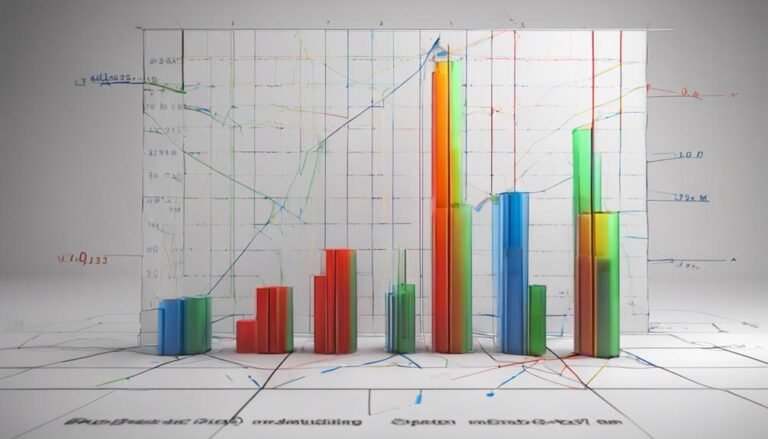What Is Business Intelligence (BI)? Types, Benefits, and Examples
Business Intelligence (BI) is a technology-driven process that allows businesses to analyze large datasets, extracting valuable insights to enhance decision-making. It utilizes data mining, process analysis, and descriptive analytics to identify trends and patterns. BI tools help in presenting complex data visually, enabling real-time analytics and data-driven decisions. Benefits include accurate and timely data for optimized decision-making. Various BI tools like data visualization and predictive analytics aid in interpreting data effectively. Key Performance Indicators (KPIs) are essential for monitoring performance against strategic goals. This overview provides a glimpse into the world of BI and its vast applications.
Key Takeaways
- BI is a data analysis process for valuable insights.
- Tools like data visualization aid in decision-making.
- BI enhances decision-making with accurate data.
- Types include data visualization and predictive analytics tools.
- KPIs quantify progress towards strategic goals.
BI Definition and Components
Business Intelligence (BI) is a technology-driven process that involves analyzing business data to facilitate informed decision-making. Data analysis plays a vital role in extracting valuable insights from large datasets, enabling organizations to make strategic decisions based on factual information rather than intuition.
Through components such as data mining, process analysis, performance benchmarking, and descriptive analytics, BI empowers businesses to identify trends, patterns, and correlations within their data. This analytical approach enhances decision-making processes by providing a thorough understanding of the company's performance, customer behavior, and market trends.
Tools and Purpose of BI
In the domain of Business Intelligence (BI), the selection of appropriate tools aligns with the overarching goal of leveraging data for strategic decision-making and operational optimization. Data visualization tools play a pivotal role in transforming complex data sets into easily understandable visual representations, enabling users to identify patterns, trends, and outliers efficiently.
These tools facilitate the presentation of insights in a clear and concise manner, aiding decision-makers in interpreting information quickly and accurately. Additionally, BI tools are designed to provide decision support by offering real-time analytics and performance metrics, empowering organizations to make data-driven decisions promptly.
Benefits and Applications
When considering the utilization of Business Intelligence (BI), the significant benefits and practical applications underscore its importance in driving informed decision-making within organizations.
- Enhanced Decision Making: BI enhances decision-making processes by providing accurate, timely, and voluminous data for analysis.
- Data Optimization: Companies leverage BI solutions to optimize their data information, ensuring that the data is structured, clean, and easily accessible.
- Evolutionary Adaptation: BI tools continually evolve to handle unstructured and diverse data formats, enabling organizations to extract meaningful insights efficiently.
These benefits highlight the key role BI plays in improving decision-making through enhanced data analysis and optimization processes.
Types of BI Tools
Various software tools are essential in the field of Business Intelligence (BI) for analyzing and interpreting data effectively.
Data visualization tools play a pivotal role in presenting information in graphical formats such as charts and graphs, aiding in easier understanding and extraction of insights. These tools help users to identify trends, patterns, and outliers within the data.
Additionally, predictive analytics tools are instrumental in forecasting future trends and behaviors based on historical data. By leveraging predictive models, organizations can make data-driven decisions to optimize strategies and improve outcomes.
Key Performance Indicators (KPIs)
The incorporation of Key Performance Indicators (KPIs) in business strategy serves as a foundational framework for monitoring and evaluating organizational performance.
- KPI Measurement:
- Quantifies progress towards strategic goals.
- Evaluates performance against predefined targets.
- Provides actionable insights for decision-making.
KPIs play an essential role in performance tracking by offering measurable metrics that reflect the success or shortcomings of business operations. These indicators, ranging from financial metrics to customer satisfaction levels, enable companies to assess their performance effectively. By setting specific, measurable, achievable, relevant, and time-bound KPIs, organizations can track progress accurately and make data-driven decisions to enhance overall performance.
Conclusion
To sum up, Business Intelligence (BI) serves as a critical framework for organizations to extract valuable insights from data, enabling informed decision-making and strategic planning.
By leveraging a variety of tools and software, businesses can enhance operational efficiency, improve performance, and stay competitive in today's data-driven landscape.
The evolution of BI continues to shape the way organizations navigate complexities and leverage data for success.
The future of BI holds endless possibilities for those who embrace its transformative power.







